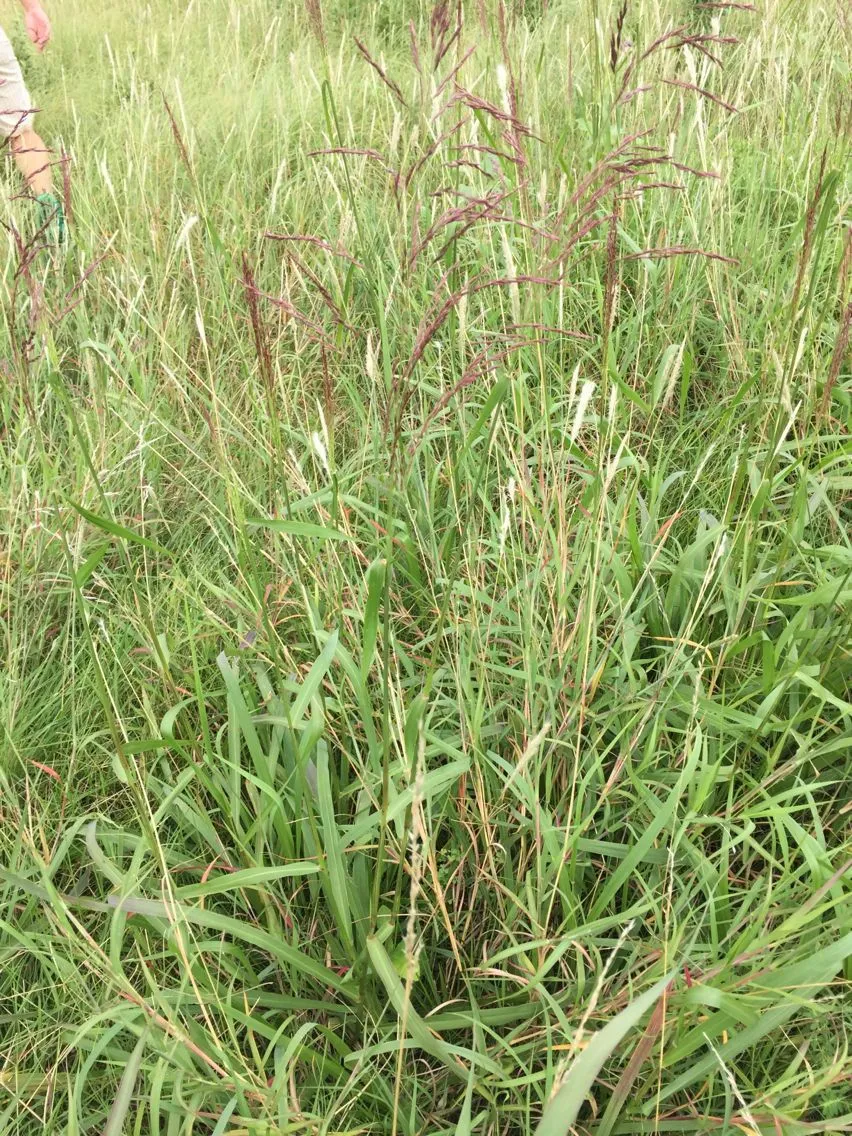
Author: (L.) Hitchc.
Bibliography: Rhodora 8: 210 (1906)
Year: 1906
Status: accepted
Rank: species
Genus: Tridens
Vegetable: False
Observations: C. & E. U.S.A. to NE. Mexico
Redtop, scientifically known as Tridens flavus, is a grass species that holds its place within the Poaceae family, which is renowned for its significant roles in both natural ecosystems and human agriculture. This perennial grass is indigenous to regions spanning Central and Eastern United States and extends its presence southwards to Northeast Mexico. Its ecological adaptability allows it to thrive in diverse environments ranging from prairies and grasslands to open woodlands and along roadsides.
Tracing back to its formal botanical identification, Tridens flavus was meticulously described in the publication Rhodora in the year 1906, attributed to the work designated as (L.) Hitchc. The historical documentation in Rhodora adds to the rich tapestry of botanical discoveries in the early 20th century, providing a foundation for understanding the species’ characteristics and distribution.
Redtop is easily recognizable by its distinctive flowering clusters which exhibit a purple to reddish hue, an attribute that not only contributes to its common name but also enhances the visual appeal of landscapes where it occurs. These flowers eventually transition to a golden brown, reflective of its species epithet “flavus,” which means yellow or golden in Latin. The wiry, lean stems and lush, green foliage of Redtop contribute significantly to its utility in soil conservation and as a forage grass for grazing wildlife and livestock, underlining its importance in both ecological and agricultural contexts.
In terms of its anatomical and physiological features, Redtop exhibits a C4 photosynthetic pathway which enables it to efficiently conduct photosynthesis even under high temperatures and light intensities – a trait particularly beneficial for survival in warmer climates.
Overall, Tridens flavus stands out not only for its ecological adaptability and visual appeal but also for its historical and botanical significance, as highlighted in the referenced literature from the early 1900s. It continues to be an important species for study and conservation within the broader spectrum of grass species in North America.
Eng: purpletop, purpletop tridens, redtop
Fra: trident jaune
En: Redtop, Purpletop, Purpletop tridens
Fr: Trident jaune
Taken Sep 1, 2022 by Annie Elle (cc-by-sa)
Taken Aug 19, 2021 by James Rush (cc-by-sa)
Taken Sep 8, 2022 by Annie Elle (cc-by-sa)
Taken May 21, 2019 by devon michigan (cc-by-sa)
Taken May 24, 2020 by Pierre Mambré (cc-by-sa)
Taken Sep 17, 2019 by Lorelei Knight (cc-by-sa)
Taken Jan 1, 1900 by EOL − John Hilty (cc-by-nc)
Taken Nov 1, 2015 by EOL − Jim Varnum (cc-by-nc)
Taken Sep 30, 2013 by EOL − Ron Edwards (cc-by-nc)
Taken Oct 26, 2022 by Johnathan Moag (cc-by-sa)
Taken Aug 15, 2015 by EOL − Jenny Smith (cc-by-nc)
Taken Aug 22, 2015 by EOL − Jenny Smith (cc-by-nc)
Taken Jan 1, 1900 by EOL − Kristen Van Neste (cc-by-nc-sa)
Taken Jan 1, 1900 by EOL − Kristen Van Neste (cc-by-nc-sa)
Taken Aug 31, 2015 by EOL − Jenny Smith (cc-by-nc)
Taken Aug 24, 2022 by Ross Kat (cc-by-sa)
Taken Aug 24, 2022 by Ross Kat (cc-by-sa)
Taken Aug 24, 2022 by Ross Kat (cc-by-sa)
Taken Oct 11, 2020 by Erda (cc-by-sa)
Taken May 10, 2019 by lise jouffrey (cc-by-sa)
© copyright of the Board of Trustees of the Royal Botanic Gardens, Kew.
© copyright of the Board of Trustees of the Royal Botanic Gardens, Kew.
© copyright of the Board of Trustees of the Royal Botanic Gardens, Kew.
Growth form: Bunch
Growth habit: Graminoid
Growth rate: Moderate
Ph maximum: 6.5
Ph minimum: 4.5
Family: Myrtaceae Author: (F.Muell.) K.D.Hill & L.A.S.Johnson Bibliography: Telopea 6: 402 (1995) Year: 1995 Status:…
Family: Rubiaceae Author: Pierre ex A.Froehner Bibliography: Notizbl. Bot. Gart. Berlin-Dahlem 1: 237 (1897) Year:…
Family: Sapindaceae Author: Koidz. Bibliography: J. Coll. Sci. Imp. Univ. Tokyo 32(1): 38 (1911) Year:…
Family: Asteraceae Author: A.Gray Bibliography: Pacif. Railr. Rep.: 107 (1857) Year: 1857 Status: accepted Rank:…
Family: Fabaceae Author: Medik. Bibliography: Vorles. Churpfälz. Phys.-Ökon. Ges. 2: 398 (1787) Year: 1787 Status:…
Family: Aspleniaceae Author: (Cav.) Alston Bibliography: Bull. Misc. Inform. Kew 1932: 309 (1932) Year: 1932…